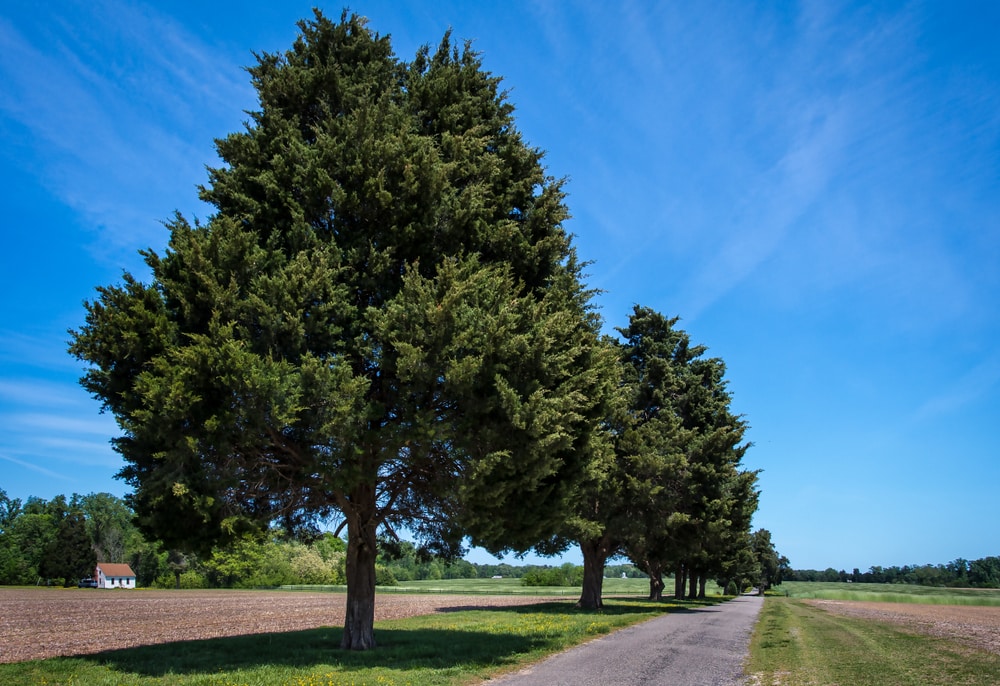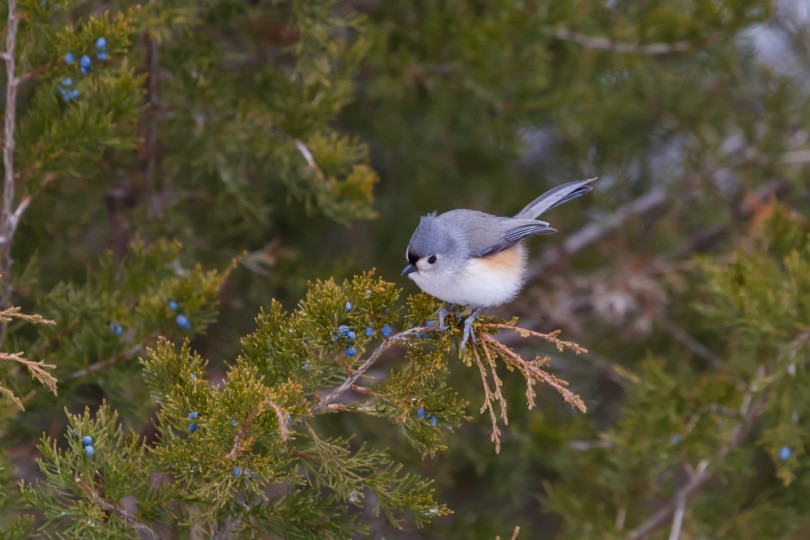What is the State Tree of Tennessee? Facts & FAQ
-
Kristin Hitchcock
- Last updated:

The state tree in Tennessee is the tulip poplar. Tennessee first designated this as the state tree in 1947, which was a decently long time after the state was founded. Before this point, there was no official state tree.
According to the TN website, this tree was chosen because it grows across the whole state. While there are many kinds of trees in Tennessee, the difference in terrain from the east to west of the state means that there actually aren’t that many species that grow throughout the whole state.
Furthermore, the state also specified that pioneers of the state used the tulip poplar heavily for construction. Therefore, it was an important tree for the very first settlers.
Plus, the tree isn’t all that rare in the state, so it isn’t challenging to find it.
What is the State Evergreen Tree in Tennessee?
On top of the regular state tree, Tennessee also has an evergreen state tree—the eastern red cedar. This tree wasn’t designated as a state tree until 2012 when the state decided to adopt another tree as a state symbol.
This evergreen tree was chosen because it was one of the earliest landscaping trees planted in Tennessee. You can also see them at many historical locations, such as Andrew Jackson’s home at the Hermitage. Plus, the land where the state capital was built was called the Cedar Knob, and the street in front of the capital is called Cedar Street.
Therefore, the cedar tree seems to have a long history in Tennessee. It was also sacred to the Cherokee people, who lived in the area before European settlers. It is also a vital part of ecological areas in Tennessee, which are sometimes referred to as cedar glades.
For all these reasons, the Tennessee government decided that the eastern red cedar was important enough to be made a state tree, as well.

The Tulip Poplar
The tulip poplar is an extremely fast-growing tree that is native to many of the southern states. Technically, this tree can grow anywhere in hardiness zones 4 through 9, which makes up the vast majority of the United States. Because it is so widespread, it is also the state tree of Kentucky and Indiana.
Their greenish-yellow flowers make this tree stand out from other popular trees in the area. Plus, their stems are also aromatic, though their flowers are not super fragrant. Their leaves turn a golden yellow in the fall, which resembles the color of their flowers.
In many cases, this tree can grow as much as 2 feet a year, making it extremely fast-growing. However, it does prefer full sun and does not grow well when shaded. Therefore, it tends to avoid forested areas, which make up the majority of Tennessee.
Usually, you can see the blooms in May and June. These blooms are around 2 inches long, so they are quite easy to spot. The petals are a greenish-yellow towards their tips, but they are often very orange at their base. This orange color makes them easy to spot.
There is a lot of lore and history surrounding this tree. It was utilized for building across the south. For instance, it was a common wood choice for railroads that ran through the area. George Washington planted a few tulip trees in Mount Vernon. These ancient trees are now 140 feet tall! Danial Boone is also said to have used this tree to build his 60-foot canoe.
In fact, this tree was a very common choice for canoes, which is why it is sometimes called the “canoe tree”.

Eastern Red Cedar
The eastern red cedar is a very ancient tree that was native to much of the United States since before the Europeans settled it. This tree has a dense pyramid shape that allows it to hold back the wind easily without breaking. Its berries are known as a common food for birds and other wildlife. Plus, this tree grows just about anywhere, making it extremely popular.
According to the USDA, this tree can grow in hardiness zones two through nine. That is a lot of area, making this tree popular across the United States and beyond.
This tree grows at a medium rate. In the right conditions, it can grow up to 2 feet per year. However, around 1 foot is more common. They prefer full sun. However, they will grow in shadier areas too. In dense forests, they tend to grow very narrow, though.
They can grow in nearly any soil. While they can deal with regular flooding, they are also drought-tolerant. Therefore, eastern red cedars do a good job of dealing with Tennessee’s often wishy-washy weather.
Because this tree is so old, there is a lot of history behind it. This tree once covered a large portion of the continent, though its range is a bit smaller now. European explorers often pointed out this tree, stating that it was one of the tallest cedars in the world. Colonial craftsmen often used it for furniture and fences thanks to its superior quality.
This tree is easy to work with, has a great color, and can withstand the outdoor elements. Therefore, it is a popular choice for crafting just about anything.

Conclusion
Both the tulip poplar and eastern red cedar have a long history in Tennessee. Therefore, they were both chosen as the state tree, though the eastern red cedar was added much later. Both of these trees can still be found throughout the state, as well as throughout much of the United States.
While they are not used quite as much today, both trees are still chosen for crafting purposes.
- https://www.arborday.org/trees/treeguide/TreeDetail.cfm?ItemID=913
- https://www.arborday.org/trees/treeguide/treedetail.cfm?itemID=930
- https://theparkecompany.com/fun-facts-about-the-tennessee-state-tree-the-tulip-poplar/
- https://sos.tn.gov/civics/pages/tennessee-state-symbols
- https://www.tn.gov/about-tn/state-symbols.html
Featured Image Credit: Gerry Bishop, Shutterstock
Contents
